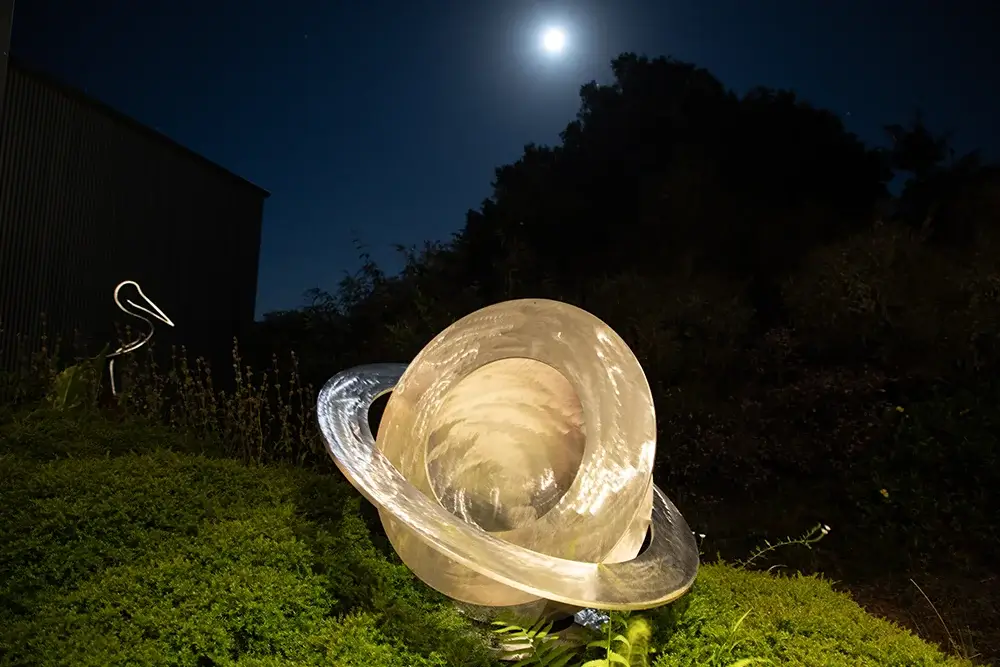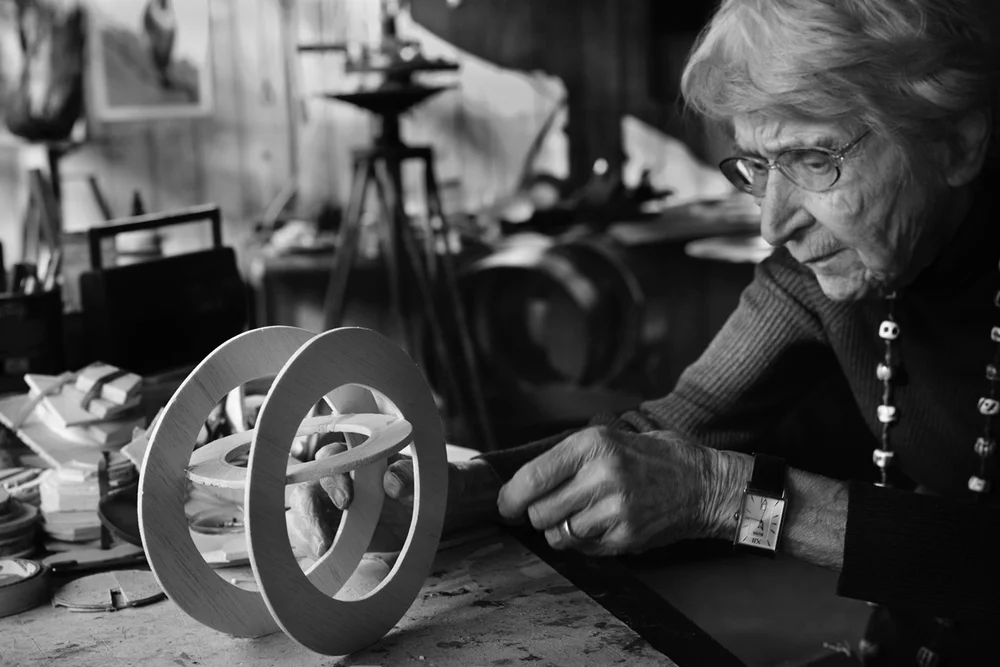Dance Around the Moon
Born in Berlin in 1915, Inge left Germany for London in mid-1939. She studied first at the Royal Academy in London and then at the Glasgow School of Art. In 1947, Inge moved to the Abbey Art Centre, an artists' community near London, where she met her future husband, Australian painter, Grahame King In early 1951, the Kings arrived in Melbourne where they were to work and live for the remainder of their lives. While it was challenging for Inge to adjust to Melbourne's rather staid, conservative environment, the house the Kings' built in bushy Warrandyte and the birth of their children provided a degree of stability after the unsettling war years.With a determination to always look forward, Inge learned jewellery at the Melbourne Technical College, (now RMIT University) designing and making hand- beaten silver and copper rings, earrings, pendants and bracelets. Highly sought after by the public, her jewellery helped to pay for the materials she needed to produce sculpture.
An engineer neighbour taught her to weld which allowed her to experiment with shaping sculpture from sheet metal. Her boulder-like welded structures, with molten metal dripped along the joins, conjured images of the rocky landscape that the Kings had excavated to build their house.
Such structures could stand up to the "untidiness" of the Australian bush. These early works marked Inge at the forefront of the development of non- figurative sculpture in Australia. She was also a founding member of the renowned Centre 5 group of sculptors, whose aim was to "help foster greater public awareness of contemporary sculpture in Australia”.
Over the decades Inge's sculptural vision and style evolved and changed. She abandoned the black painted boulder-like structures of the 1960's for steel ground by hand. Rough stainless-steel sheets gradually transformed into precise, sleek, elegant curves culminating in her iconic, monumental wave-like sculpture, Forward Surge, situated in the arts precinct in St Kilda Road.
This Melbourne landmark encapsulates her notion that sculpture should be interactive and she took much pleasure in watching families picnic in its shade and children rollerblade on the curved surfaces. A fascination with flight and movement saw her create more figurative sculpture in the 1980's and 1990's including a series on Angels, dancing figures and bird- like creatures, many of which were cast in bronze.
Following the launching of the Hubble Space telescope (1990) and the images of planets and celestial bodies shown by the media, Inge began working on her Celestial Rings series. Balance and movement have always fascinated her, and assemblage (3- dimensional elements projecting out) enabled her to let forms be air-borne, balance shapes or anchor them precariously. Juxtaposing solid circles with curving arcs, ellipses, rings and orbits, this group of sculptures evoke exotic, heavenly formations.
The material, brushed stainless steel, creates lightness and floating movement. The brilliance of the brushed surface, done with an angle-grinder, changes with the weather and the light. Rings around the Moon encapsulates these qualities, while the simplicity and clarity of form give the sculpture grace and elegance. Reminiscent of Inge's iconic and monumental Rings of Saturn (Heidi Museum of Modern Art, 2005), these sculptures are a fitting finale for an illustrious career.
Many of King's large-scale works are found in public spaces and on university campuses around Australia. Every major gallery in Australia owns one or more of her sculptures and she has work in the UK, USA and Germany. Inge was made a Member of the Order of Australia (AM) in January 1984 and was given the Visual Arts Emeritus Award in recognition of her central role in raising the profile of modern sculpture in Australia.


